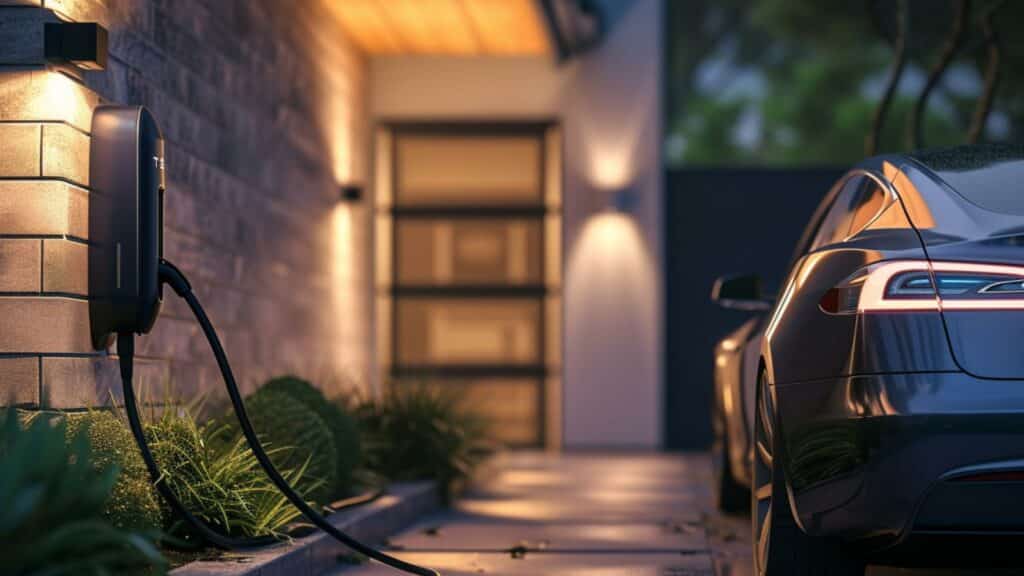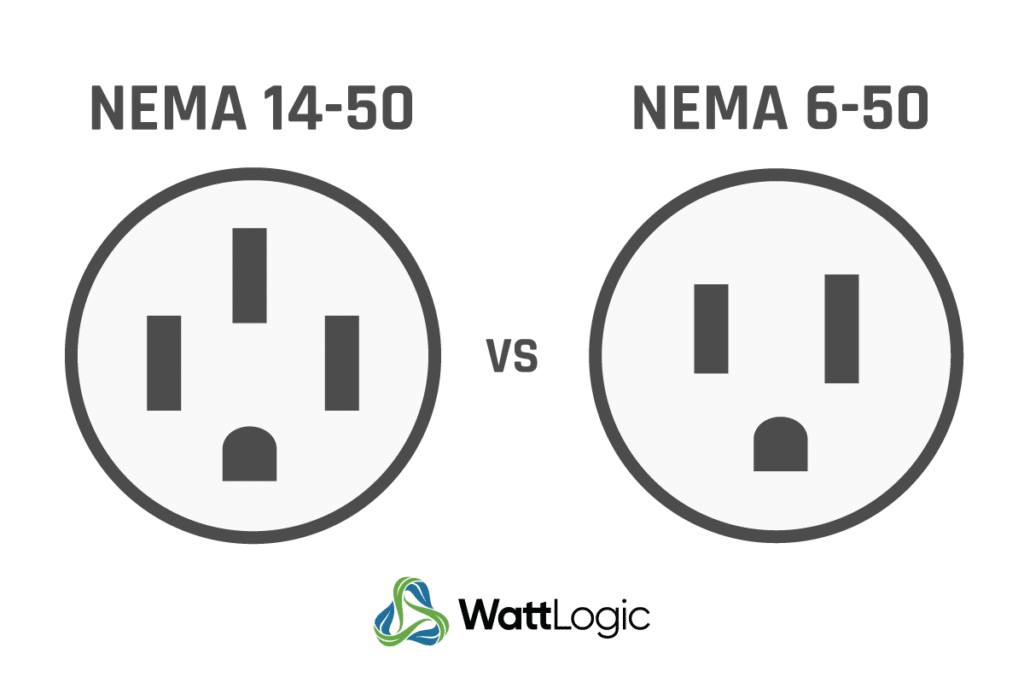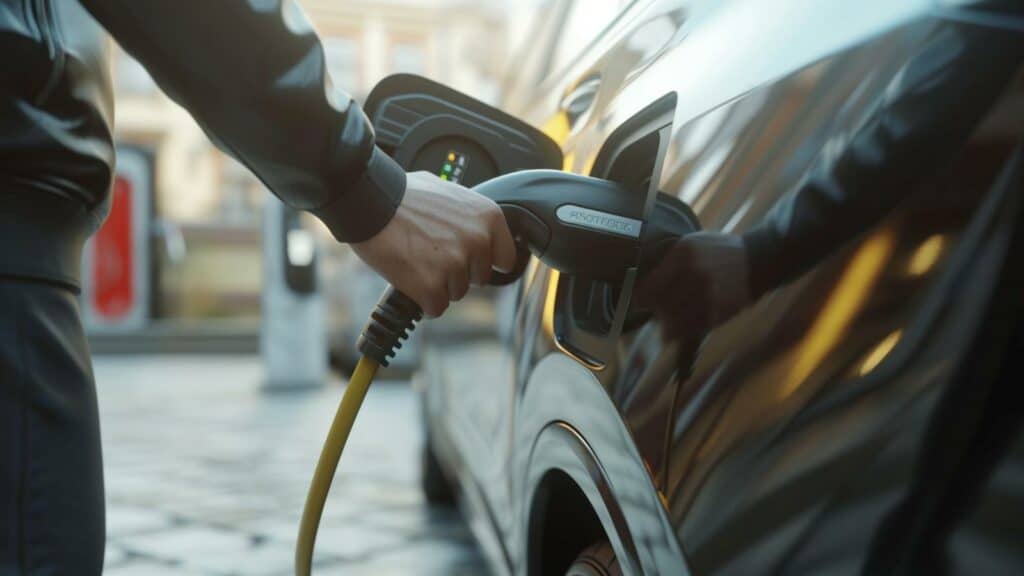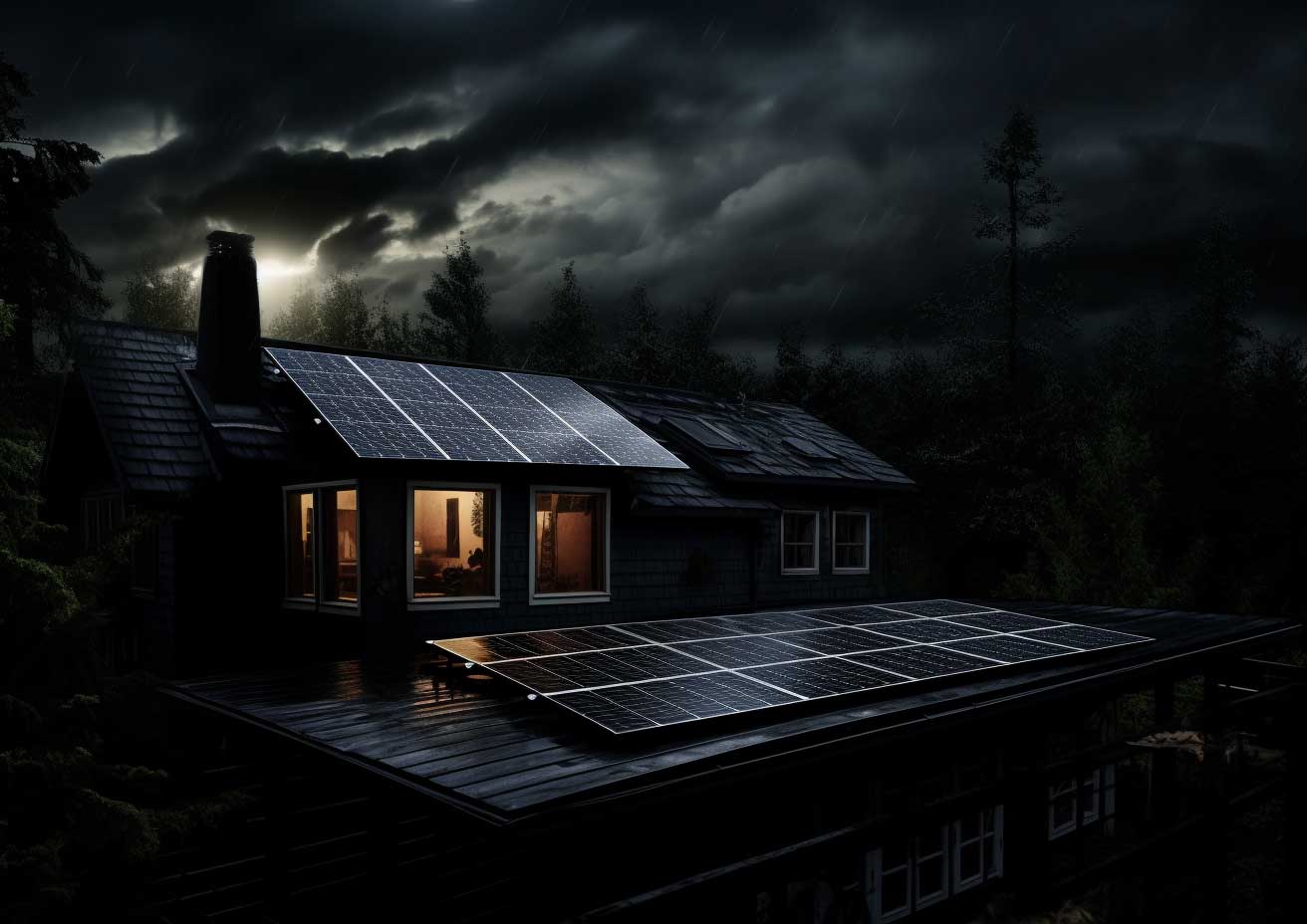As more and more drivers are hopping on the electric vehicle (EV) bandwagon, one often discussed topic in the EV world is home charging. Opting to charge an electric vehicle at home offers added convenience and cost-effectiveness.
For any EV owner or prospective buyer, understanding the specs of home charging is vital, and among the details that demand attention are the types of plug connectors catering to these charging needs. More specifically, you’ve likely heard mentions of NEMA 6-50 and NEMA 14-50 outlets or seen these codes when browsing EV charging station details or online electric vehicles for platforms.
Join us as we dive deeper into the world of NEMA 6-50 and NEMA 14-50 connector plugs, honing in on their strengths, differences, and optimal usage scenarios.
What is a NEMA Plug?
A NEMA plug, deriving its name from the National Electrical Manufacturers Association, is a common standard for electrical power plugs used extensively across North America and many other regions. Recognizable by its distinctive configuration of neutral prongs and wire designs, a NEMA plug is structured effectively for various indoor and outdoor applications.
These plugs are used in various domestic appliances, such as an electric range, washing machines, refrigerators, dryers, and even devices that demand more substantial power, such as air conditioners. Beyond just household utilities, NEMA plugs also play a pivotal role in electrifying industrial settings like manufacturing plants and construction sites. Here, they power heavy machinery that often calls for elevated voltage parameters.

NEMA plugs form the backbone of many home charging solutions in electric transport. They are commonly employed in electric vehicle chargers, most notably in Level 2 charging equipment. The nature of the appliances or equipment you’re looking to power determines the NEMA plug variant needed.
However, regardless of the chosen plug type, it’s vital to remember that a licensed electrician should carry out all installations. By adhering to this, homeowners can ensure safety and effectiveness in their electrical setups, recharging their EVs efficiently and empowering their homes with a sustainable energy solution.
What is a NEMA Outlet?
A NEMA outlet is a receptacle designed to receive a NEMA plug, making it part of a cohesive system that securely delivers electricity to various appliances and devices. The NEMA system includes various configurations, each indicated by a unique number like 14-50 or 6-50. These numeric designations hint at the specific characteristics of each outlet – for instance, the ’14’ or ‘6’ pointing at the configuration of prongs (conductors), and the ’50’ signifying the maximum amperage the outlet can ferry.
Whether in residential locations, recreational vehicles (RV) parks, or commercial settings, you’ll find these NEMA outlets diligently playing their part in providing power. NEMA outlets like NEMA 14-50 or NEMA 6-50 are pivotal components enabling level 2 charging at home in electric vehicles.
Being aware of the nuances among these outlets, understanding their capacity, and matching them with the relevant EV charger is key to ensuring a safe, speedy, and effective charging process. Thus, understanding NEMA outlets and making an informed choice for home charging or any power-demanding setup can be a major game-changer in harnessing reliable electric power conveniently.
Differences Between the NEMA 6-50 vs 14-50 Plug Types
When powering high-demand devices such as electric vehicles and heavy-duty appliances, choosing the right plug type is crucial for safety and efficiency. The NEMA 6-50 and NEMA 14-50 plugs are frequently encountered contenders in electrical connectors, each with unique attributes and applications.

NEMA 6-50
The NEMA 6-50 plug sports a lean and straightforward design that employs just three holes. These holes correspond to two ‘hot’ wires and one ground. The lack of a neutral wire reduces the complexity of the plug’s design, translating into an overall affordable and simple installation process. This can appeal to homeowners looking to keep renovation costs manageable.
Its flexible nature makes it versatile for various electric devices and setups in different locations. Originally intended to cater to power-intensive appliances like a welder and air compressors, NEMA 6-50 has carved out a niche in the EV charging domain. Since its design eliminates the need for a neutral wire, this outlet exclusively provides 240 volts without the option of 120 volts. While this might limit its use to specific types of electrical devices, it’s precisely what you need for Level 2 EV charging.
A NEMA 6-50 outlet can provide significant power in EV charging. Despite its less common usage compared to NEMA 14-50, it’s fully capable of meeting home charging needs for EV owners. One noteworthy point is that Tesla provides an adapter for connecting their Universal Mobile Connector (UMC) to a NEMA 6-50 outlet. Despite being less commonly used than the NEMA 14-50 plug, this shows its practicality in the EV world.
NEMA 14-50
The NEMA 14-50 plug might look more intricate due to its four holes corresponding to two ‘hot’ wires, one ground, and one neutral wire. However, that fourth slot for the neutral wire gives this plug type a broader scope of application.
This outlet’s neutral wire makes it capable of delivering both 240 volts and 120 volts, should you have devices that operate at a lower voltage. This possibility enhances the versatility of the NEMA 14-50 plug and shows why it’s a more common choice. The NEMA 14-50 outlet’s design aligns nicely with the National Electrical Code (NEC), which makes it a prevalent choice for RV parks and recent residential installations. This might translate into easier access to these well-regulated plugs, whether you want one installed at your home or find one at public locations.

In the NEMA 6-50 vs 14-50 debate, the NEMA 14-50 may hold an edge due to its compatibility with a wider range of electric vehicles and home charging stations. Whether it’s a Tesla wall connector or other EV home charging stations, they are all set to work with a NEMA 14-50 outlet.
The NEMA 14-50 plug’s widespread usage, compliance with national codes, and broad compatibility make it a reliable, comprehensive choice for electric vehicle owners, adding to the confidence and convenience of at-home EV charging experience.
Clarifying Plug vs. EV Charging Connector
Before delving further into the comparison, clarifying the difference between the plug and the EV charging connector is essential. These terms are often used interchangeably but serve distinct purposes.
Plug: The plugs are electrical connectors for your wall outlet and are the interface between your charging station and the electrical supply in your home.
EV Charging Connector: The EV charging connector is the part that plugs into your electric car. It facilitates the connection between your vehicle’s battery management and charging system and the electricity flowing through your house. Level 2 EV chargers must be hardwired or plugged into a heavy-duty electrical outlet, similar to those used for electric ovens.
What is the NEMA 14-50 Outlet Usage?
The NEMA 14-50 is a 240-volt plug with a maximum amperage of 50 amps, a requirement for safely using a 40-amp home EV charging station. You’ll commonly find NEMA 14-50 outlets in RV parks and mobile homes. With the right Level 2 EV charger, you can fully charge your electric vehicle in under six hours. Mobile chargers often come equipped with a NEMA 14-50 plug, allowing direct connection to an outlet without needing hardwired installation. For safety reasons, continuous use should not exceed 80% of its maximum power, so your charger shouldn’t produce more than 40 amps when plugged in.
What is the NEMA 6-50 Plug Usage?
NEMA 6-50 and 14-50 plugs are used for appliances requiring higher power, such as dryers and stoves. However, the NEMA 6-50 outlets are often associated with generators and compressors but have also found their place in providing power to electric vehicles. Tesla, for example, uses this plug type with the help of an adapter to charge its EVs. Notably, NEMA 6-50 plugs can deliver up to 9.6kWh or provide 30-35 miles of range for your vehicle in just one hour, making them one of the fastest residential charging options.
What are the Pros and Cons of Using a NEMA 14-50 vs 6-50?
Deciding between a NEMA 14-50 and a NEMA 6-50 outlet for charging your electric vehicle or powering up heavy-duty appliances involves weighing their advantages and limitations. Each outlet type brings its own set of benefits to the table and certain drawbacks that could influence your choice. Let’s break down the pros and cons of the NEMA 14-50 and NEMA 6-50 outlets to clarify which best suits your home or business needs.
Pros and Cons of Using a NEMA 6-50
Pros:
- The NEMA 6-50 plug, with its simple three-pronged design (two hot and one ground), can be easier and less costly to install. It is a straightforward piece of equipment and does not require additional wiring like a neural wire, reducing installation complexity and cost.
- Its compatibility with high-power appliances like welders and compressors makes it a versatile choice in more industrial applications or heavy-duty households.
- When it comes to EV charging, a NEMA 6-50 outlet provides amplifying power, sufficient for effectively charging your vehicle at home.
- Despite being less common than NEMA 14-50, the NEMA 6-50 can be a perfectly viable choice for several EV owners, with companies like Tesla even providing an adapter for their chargers to utilize this electrical outlet.

Cons:
- Its absence of neutral wire results in the NEMA 6-50 plug exclusively providing 240 volts. This means it cannot supply 120 volts, limiting its use to specific types of electrical devices.
- The NEMA 6-50 is less common and standardized than the NEMA 14-50, meaning that as an EV owner, you’ll have to make sure your EV charger is compatible with this plug or that an appropriate adapter is available.
Pros and Cons of Using a NEMA 14-50
Pros:
- The NEMA 14-50 plug’s ability to provide both 240 volts and 120 volts, thanks to its neutral wire, gives it a broader scope of application. This enhances its versatility, making it adaptable to various electronic devices beyond EV charging.
- It’s a common choice for EV owners due to its wider compatibility with various electric vehicles and home charging stations and being the standard installed in many RV parks and new residential buildings.
- Installing a NEMA 14-50 outlet at home can also “future-proof” your house. As EV technology develops and newer models emerge, your installed NEMA 14-50 will likely be compatible with their charging needs.
Cons:
- When the necessary upgrading for circuit breaker and hardwire installation factors come into play, installing a NEMA 14-50 could be more complex and expensive than a simpler NEMA 6-50.
- Since the NEMA 14-50 is a 50-amp plug, it will require a dedicated circuit and GFCI breaker from your electrical panel, which may already be near its capacity in many homes. If that’s the case for you, installing a NEMA 14-50 may require upgrading your panel or potentially even your home’s electrical service, incurring additional costs.
Which plug is better NEMA 6-50 or 14-50?
Whether the NEMA 14-50 plug is superior to the NEMA 6-50 depends on your needs, circumstances, and preferences. Remember, both connector plugs can deliver safe and robust charging capabilities for your electric vehicle. Yet, it’s important to understand that these two outlets cater to different use cases, and your circumstances can influence which one is better for you.
The NEMA 14-50 plug often holds the advantage regarding versatility and compatibility. This plug type, approved by the National Electrical Manufacturers Association, has become a standard across American households and RV parks. Therefore, it presents a more convenient and widely supported charging solution for EV drivers on the Chargepoint Home Flex and other widely used charging stations.
On the other hand, the NEMA 6-50 plug may be less universal while providing similar power to the NEMA 14-50. However, it does have its advantages, including simplicity and cost-effectiveness. Primarily found in situations requiring higher power, like welders and electric ovens, NEMA 6-50’s utility in the EV world is emerging, especially with some EV chargers and adapters like Tesla’s wall connector allowing for it.
Get the Best NEMA 14-50 EV Charger Installed with Professional Help
When selecting the optimal NEMA plug type for your electric vehicle (EV) charging needs, several crucial factors should be considered. However, if you’re aiming for a highly versatile and widely compatible option, we recommend using the NEMA 14-50 plug type. This particular plug type holds favor with most EV charging station manufacturers, rendering it a prevalent choice for installations.
Whether you are contemplating the installation of a ChargePoint Home Flex, Tesla Wall Connector, EnelX Juicebox, Autel EV charger, or any other EV charging solution, making the right plug type selection and ensuring meticulous installation are paramount. When you’re in the market for an EV charger, ensuring that the installation is executed correctly is of utmost importance. At WattLogic, we recognize that installing an EV charging station can seem daunting, so we stand ready to offer our assistance. With extensive knowledge and a commitment to delivering swift and efficient installations throughout North America, we aim to alleviate the stress and uncertainty associated with home EV charger installations. Allow us to guide you through the process with our tailored approach. Rest assured that once our work is complete, your EV charger will be up and running, ensuring speed and safety.
Discover more about our unique EV charging process and obtain a no-obligation EV charger installation quote today!
This article has clarified the choice between NEMA 14-50 and 6-50 outlets. Please contact us with any questions about acquiring an EV charging station. We are here to assist you every step of the way.




